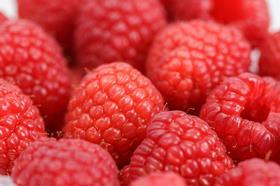
The Adelita raspberry variety developed by Spanish breeder Planasa continues to win over consumers and retailers across Europe. Its high productivity, ease of handling and long season has also made it a hit among producers, and since its introduction four years ago, global production has risen to an estimated 2,000ha.
For Andalusian grower-exporter Cuna de Platero, the variety underpins its rapidly expanding raspberry programme, accounting for 80 per cent of its total output, which this season is forecast to reach between 1,500 and 1,800 tonnes. The company markets its Adelita production under its premium Berrycatessen label, which has gone from strength to strength since its launch at the beginning of 2015.
For commercial director Sergio Sainz, it is clear evidence that improved varieties are one of the key factors driving demand for fresh berries, together with better availability and marketing campaigns centring on their nutritional benefits.
“There’s no doubt that new varieties are raising the quality bar, allowing us to reach even distant markets with fruit in peak condition,” Sainz told Fruitnet. “Thanks to Adelita we are able to offer consumers Spanish raspberries virtually year-round.”
According to Freshuelva, raspberry acreage in Huelva – home to almost 90 per cent of the country’s soft fruit production –has increased by around 25 per cent this season to 1,815ha, reflecting the growing diversification of the soft fruit sector seen in recent years.
In spite of a glut in production during the early stages of the season brought on by the unseasonably warm winter, Sainz says the current campaign has been satisfactory, with strong demand across all markets and reasonable price levels. “Although the mild temperatures brought production forward this has not caused serious repercussions in terms of our overall performance this season. Adelita continues to surprise us with its production capacity and ability to extend our season,” he said.
Meanwhile, the company continues to invest in upgrading its packhouse, this year alone seeing the introduction of new packing machinery, more efficient lighting and a new pollination cage for the reproduction of new strawberry varieties, among other projects.
It has also rolled out its Fresh Picking system to 100 per cent of its farms. The systems avoids harvesting at the hottest time of the day, thereby improving both the quality of the fruit and working conditions for pickers and reducing energy costs as the fruit requires fewer chilling hours.



